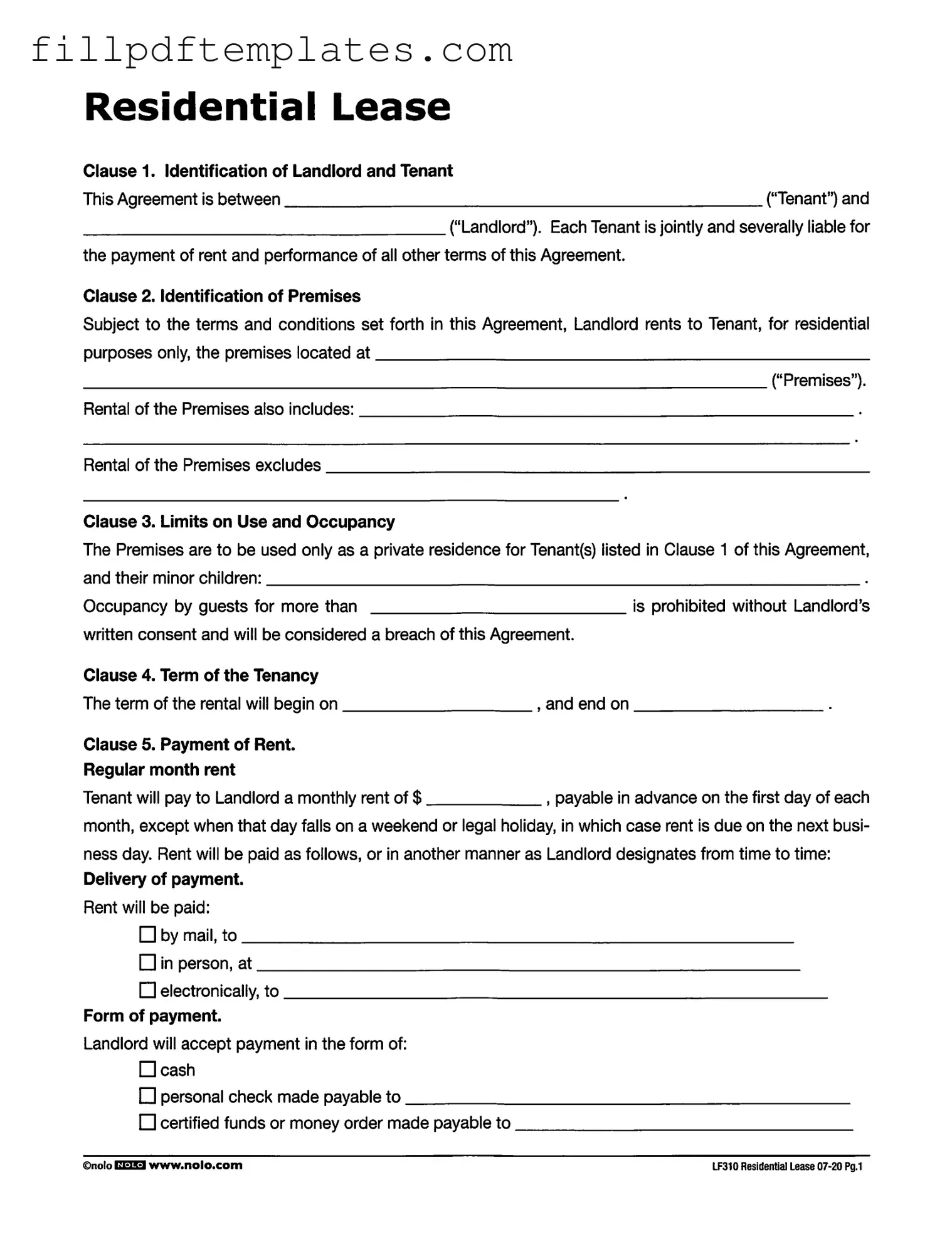The LF310 Residential Lease form serves as a critical document in the relationship between landlords and tenants, outlining the fundamental terms and conditions governing residential leases. This form begins by clearly identifying the parties involved, namely the landlord and the tenant, emphasizing that each tenant is jointly responsible for fulfilling the lease obligations. It specifies the premises being rented, ensuring that the property is designated solely for residential use and detailing restrictions on occupancy, including limits on guests. The lease establishes the duration of the tenancy, which is crucial for both parties to understand their commitment. Payment terms are meticulously outlined, including the monthly rent amount, the due date, and acceptable forms of payment. Additionally, the document addresses late charges and the consequences of returned checks, providing a framework for financial transactions. Security deposits are also covered, with stipulations on their use and return after the lease ends. Utilities are delineated, clarifying which party is responsible for payment. Lastly, the form prohibits subletting and assignment of the lease without prior consent, reinforcing the importance of maintaining control over the rental property. Together, these elements create a comprehensive agreement that protects the rights and responsibilities of both landlords and tenants.










